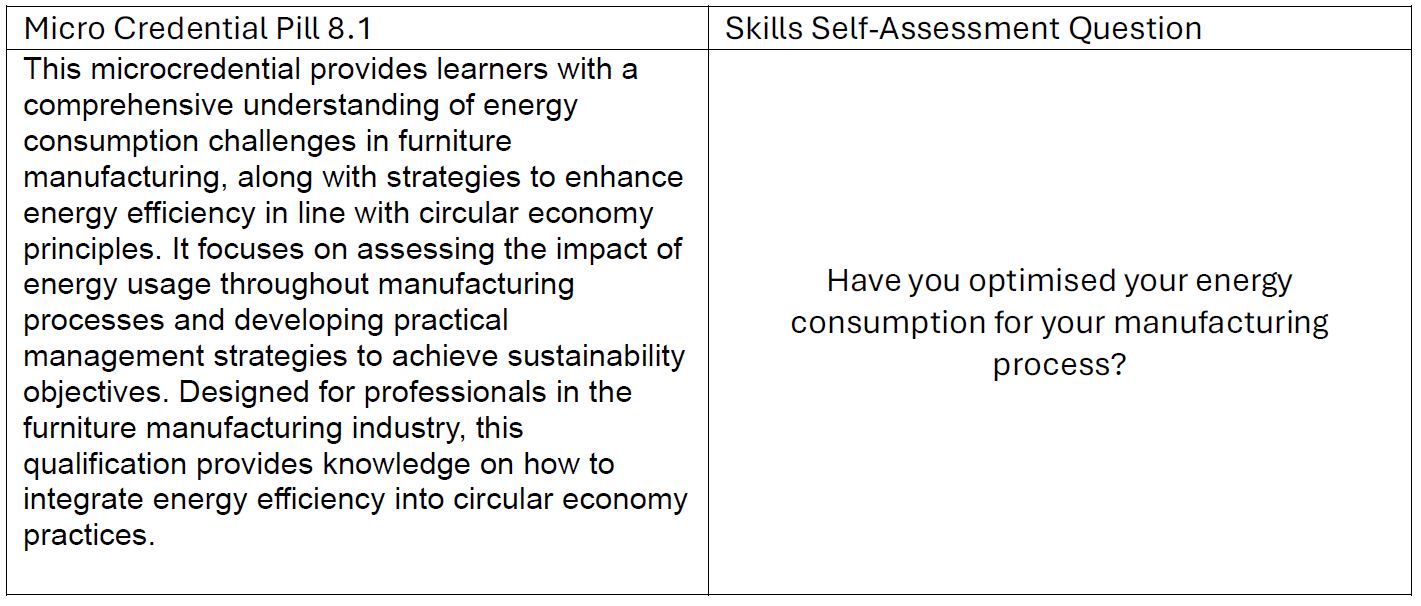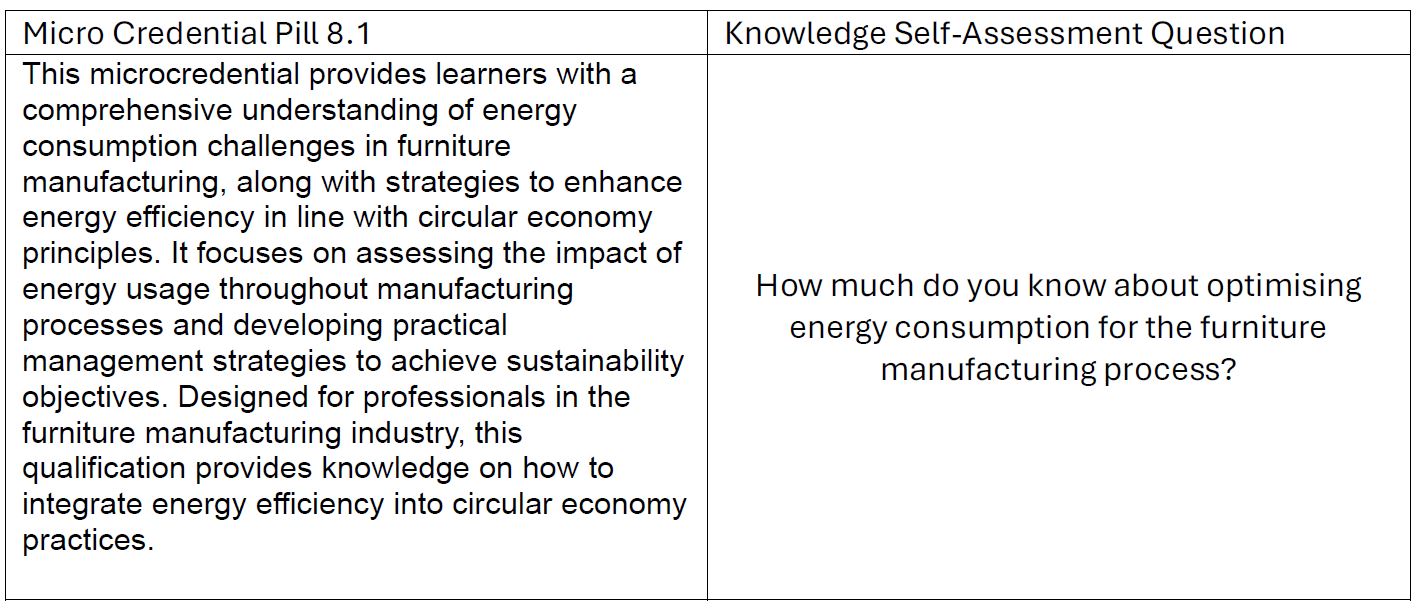The CirCLER project is now in the stage of finalising the content for the curriculum for future Circular Economy Transition Managers (CETM). However, it is important to recognise the prior knowledge that users may have before attempting the curriculum. While the curriculum is built to provide a complete view of managing circular transitions in the furniture industry, it is also to be offered to individuals who may only want to upskill in certain areas.
In order to make this as valuable an experience as possible, a self-assessment evaluation tool is being developed that will recommend what content individuals should prioritise within the curriculum. The creation of this tool is being led by ATU and supported by AMBIT. As such, ATU has been responsible for the creation of the self-assessment questions and answers, while AMBIT will integrate these questions into an online, multiple-choice, question-style tool.
The questions for the self-assessment tool were developed based on the micro-credentials created for each pill. These micro-credentials describe the main takeaways for the learner at each stage of each module and, as such, represent a very concise source to base the questions on. The CirCLER curriculum is designed for both furniture industry practitioners and higher education students, each of whom brings different skills and knowledge with them before undertaking the curriculum. Early on in the development of the self-assessment tool, it was decided that the questions would need to assess both the individual's skills and their knowledge of each pill in the CirCLER Curriculum. As such, two sets of questions were developed that considered the individual's skills or their knowledge of the circular furniture industry.
Questions based on the user's skills look at the micro-credential for each pill and assess the practical knowledge that the user may have in the area. This can be seen in the example below, from Pill 8.1, Energy Consumption:

The knowledge self-assessment questions were structured in a similar fashion and focus on what the individual knows about the topic, even if they haven’t had practical experience. This is seen in the example below:

In answering the question, the individual will be presented with multiple-choice answer options. These were developed for each pill for both the skills questions and knowledge questions. An example is shown below for pill 8.1 skills questions:

The choice of answer for each question within each module will be calculated on the skills self-assessment tool to show how well the individual understands the content of the module and a recommendation will be given as to whether the individual should complete the module or wether their knowledge is sufficient.
With the self-assessment questions and answers developed. The next step in T5.2 is the creation of the online tool, which will be completed by July.


